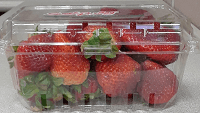The COVID-19 pandemic has had a notable impact on the food packaging market, both in terms of the foods being packaged and the types of packaging used:
- In 2020, sharp declines in foodservice sales and stay-at-home recommendations led to a shift away from restaurants and an increase in cooking at home that remains a significant (if less widespread) trend in 2022, despite bars and restaurants reopening.
- Interest in food that can be stocked in a freezer or elsewhere became a higher priority for more consumers.
- An increase in snacking and heathier eating also changed the types of food purchased and corresponding packaging needs.
A new Freedonia Group analysis explores how these and other trends are affecting consumer attitudes about food packaging, and what that means for both food brands and packaging suppliers.
Eating Habits Changed Over COVID
Many consumers changed their eating habits because of the coronavirus. More than half of respondents to a survey featured in the analysis reported eating more comfort foods in 2020, as well as more snacks and treats, all of which can be both comforting and indulgent. Eating of comfort foods remained relatively steady during the year while snack consumption declined, likely as more people returned to away-from-home schedules that limited snacking occasions.
While many people reported that they were eating more healthily, about a third of adults ate more processed food during 2020. The percentage reporting this was highest in April-May (shoppers were still stockpiling canned and frozen goods, and fresh products were less available), and lowest in November-December (shoppers were buying more fresh products, which were more readily available).
Effect of Changed Eating Habits on the Food Packaging Market
The shifts in consumer eating habits seen over the COVID-19 pandemic affected the food packaging market, in large part because food purchased for home consumption via retail outlets uses more packaging per serving, because it is sold and shipped in smaller quantities than products used in the foodservice market. But consumers who are interacting more with food packaging on a daily basis because they are eating more meals at home also has an impact – boosting demand for packaging that, for example, better suits their needs and lifestyles, improves sustainability, and enhances the convenience of preparing and/or consuming the packaged food.





